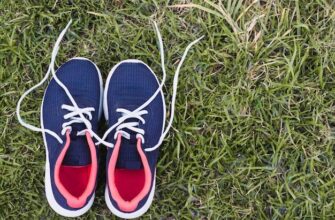How To Start Running For Weight Loss For Beginners
Introduction
Running is a popular form of exercise that can help with weight loss and overall fitness. Many beginners are unsure of how to start running and often feel overwhelmed by the process. This article aims to provide a comprehensive guide on how to start running for weight loss, specifically targeting beginners.
1. Set Clear Goals
Before starting any new exercise routine, it is important to set clear goals. Determine what you want to achieve with your running, whether it be weight loss, improved cardiovascular fitness, or simply enjoying the activity. Setting goals will help you stay focused and motivated.
2. Get the Right Gear
Investing in good-quality running shoes is essential for preventing injuries and ensuring comfort during your runs. Visit a specialty running store to get fitted properly and find the right shoes for your foot type. Additionally, consider getting moisture-wicking clothing and a supportive sports bra for added comfort.
3. Start Slowly
As a beginner, it is crucial to start slow and gradually increase your running distance and intensity. Begin with a combination of walking and running, using intervals to build up your endurance. Aim for at least three sessions per week, with rest days in between to allow your body to recover.
4. Follow a Training Plan
Following a structured training plan can help you progress and achieve your goals more effectively. Look for beginner-friendly plans that gradually increase your running time and distance over several weeks. Many apps and websites offer free training programs to assist beginners.
5. Warm-up and Cool Down
Always start your running sessions with a proper warm-up to prepare your muscles and joints for the activity. This can include dynamic stretches, such as leg swings and arm circles. After your run, cool down with static stretches to help prevent muscle soreness and improve flexibility.
6. Listen to Your Body
Pay attention to any signals or discomfort your body may be giving you during your runs. Pushing through pain or exhaustion is not recommended and can lead to injuries. Take breaks when needed, and consult a healthcare professional if you experience any persistent pain.
7. Mix Up Your Routine
To prevent boredom and keep your body challenged, mix up your running routine. Incorporate different types of runs, such as interval training, hill sprints, or long slow runs. Vary your routes, explore different terrains, and consider joining a running group or club for added motivation.
8. Stay Hydrated
Hydration is essential for optimal performance and recovery. Make sure to drink plenty of water before, during, and after your runs, especially during hot weather. Consider carrying a water bottle or planning your routes to include water fountains or other sources of hydration.
9. Fuel Your Runs
Eating a balanced diet with adequate nutrients is key to fueling your runs and supporting weight loss. Focus on consuming whole foods, including lean proteins, complex carbohydrates, and healthy fats. Experiment with pre-run snacks to find what works best for your energy levels and digestive system.
10. Monitor Your Progress
Tracking your progress can be highly motivating and help you see how far you’ve come. Use a running app or a fitness tracker to monitor your distance, pace, and calories burned. Celebrate milestones and set new goals to keep yourself motivated and engaged in your running routine.
11. Find Accountability
Finding a running buddy or joining a running group can be a great way to stay accountable and motivated. Knowing that someone is relying on you to show up for a run can help you stick to your training plan. Additionally, sharing your progress and challenges with others can provide support and encouragement.
12. Gradually Increase Intensity
Once you have built a solid running base, gradually increase the intensity of your workouts. This can involve faster-paced runs, longer distances, or more challenging terrain. However, be cautious not to increase intensity too quickly, as this can lead to overuse injuries.
13. Cross-Train
Incorporating cross-training activities into your routine can help prevent overuse injuries and improve overall fitness. Consider adding activities such as swimming, cycling, strength training, or yoga to complement your running workouts. This variety will help develop different muscle groups and enhance overall performance.
14. Rest and Recovery
Rest and recovery are crucial components of any training program. Allow yourself at least one or two rest days per week to give your body time to repair and rebuild. Listen to your body and adjust your training schedule if you feel excessively fatigued or if you notice any signs of overtraining.
15. Stay Consistent
Consistency is key when it comes to running for weight loss. Make running a regular part of your routine and prioritize it as you would any other important commitment. Even when motivation wanes, remind yourself of your goals and the benefits you have experienced from running.
16. Overcoming Mental Barriers
Running can be mentally challenging, especially for beginners. Overcome mental barriers by breaking your runs into smaller, more manageable sections, such as focusing on getting to the next lamppost or running for a certain amount of time. Practice positive self-talk and surround yourself with supportive and encouraging individuals.
17. Stay Safe
Safety should always be a priority when running. Run during daylight hours whenever possible and choose well-lit routes. Wear reflective clothing if running in low-light conditions and run against traffic to be more visible to drivers. Carry identification, a phone, and let someone know your planned route and estimated return time.
18. Be Patient
Progress takes time, and it is essential to be patient with yourself as a beginner. Avoid comparing your progress to others and focus on your own achievements. Celebrate small victories along the way and trust in the process. With consistency and perseverance, you will see improvements over time.
19. FAQs
Q: Will running help me lose weight?
A: Running can be an effective way to support weight loss. Combined with a balanced diet and consistent training, running helps burn calories and increases metabolism.
Q: Can I start running if I’m overweight?
A: Absolutely! Running is a great exercise option for people of all sizes. Start slowly and gradually increase intensity to minimize the risk of injuries.
Q: How often should I run as a beginner?
A: Aim for at least three running sessions per week as a beginner. Include rest days in between to allow your body to recover and adapt to the new exercise.
Q: Should I stretch before or after running?
A: It is recommended to perform a dynamic warm-up before running and static stretches after your run. This helps prevent injuries and improve flexibility.
Q: Can I run if I have joint pain or arthritis?
A: If you have joint pain or arthritis, it is best to consult with a healthcare professional before starting a running program. They can provide guidance on the most appropriate exercises for your condition.
Q: How long will it take to see results from running?
A: The timeline for seeing results from running varies for each individual. Consistency and adherence to a balanced diet will ultimately determine how quickly you notice changes in weight and fitness level.
Q: Is it normal to feel sore after running?
A: Some muscle soreness after running is normal, especially for beginners. This is a sign that your muscles are adapting to the new demands. However, if the pain is severe or persists, it is advisable to seek medical advice.
Q: Can I run on a treadmill instead of outdoors?
A: Treadmill running is a convenient alternative to outdoor running, especially during inclement weather or for those who prefer indoor exercise. It offers similar benefits and allows for easier pace and distance control.
Q: Can I lose belly fat by running?
A: Running can contribute to overall weight loss, including reduction in belly fat. However, spot reduction is not possible, and weight loss is influenced by a combination of factors including diet, exercise, and genetics.
Q: Can I run if I have asthma?
A: Many individuals with asthma can safely participate in running. Consult with your healthcare provider to develop a management plan that includes appropriate medication and monitoring.
20. Conclusion
Starting running for weight loss can be both exciting and challenging. By following the steps outlined in this article, you will be well-equipped to begin your running journey as a beginner. Remember to set realistic goals, listen to your body, and stay consistent. With time and dedication, running can become a fulfilling and sustainable exercise habit that supports your weight loss goals.















































